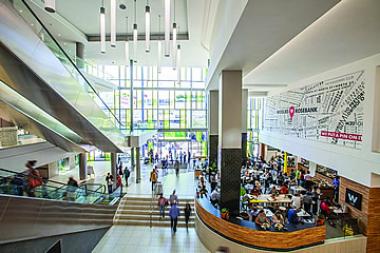Low-income malls bear brunt of austerity
 Rental rates in higher quality super-regional malls are likely to maintain current levels, while moderate declines are forecast in smaller malls in peripheral areas.
Rental rates in higher quality super-regional malls are likely to maintain current levels, while moderate declines are forecast in smaller malls in peripheral areas.
The outlook for the retail sector in the short term is uneven, JLL South Africa says in its first quarter report, with centres serving lower-income groups expected to face challenges while those in the higher living standards measure brackets can look forward to greater stability.
Rental rates in higher quality super-regional malls are likely to maintain current levels, while moderate declines are forecast in smaller malls in peripheral areas.
The report shows that the trend of vacancies in retail accommodation is unbalanced as malls larger than 25,000m² have a vacancy rate of just 4% while smaller malls showed an average vacancy of 8.2%.
“While the performances of retail centres differ, it is our view that location will play a significant role in the performance of retail accommodation in this climate. Centres in more affluent areas have maintained attractiveness to tenants, being in close proximity to stable consumer bases,” JLL head of research Zandile Makhoba says.
Makhoba says centres in more affluent areas have been able to maintain higher rental rates, which are supported by low vacancy rates.
She says that although little growth is anticipated, it is expected that current demand will be maintained in such areas because higherincome households tend to be less sensitive to inflationary pressures.
In middle- to lower-income households, higher prices for food and transport are likely to put pressure on the retailers of less essential goods, which could lead to lower demand for retail space and higher vacancies.
“However, we believe that malls and centres with trusted food anchors and general dealers are likely to survive this period of lower consumer confidence.”
While demand factors are a damper for the short-term outlook, the long-term value in retail investment is still visible in developer confidence, she says.
Ms Makhoba says Gauteng continued to show significant growth compared with other provinces, often attracting households from elsewhere in the country.
According to the JLL report, retail developments totalling 292,818m² have been completed over the past two years, with 359,040m² under way in Johannesburg.
One of the most anticipated developments is the Mall of Africa in Waterfall Estate near Midrand.
The mall will add 120,000m² to the retail stock in Johannesburg, competing with Sandton City Shopping Centre to its south and Eastgate Shopping Centre in Bedfordview.
Its location near the residential areas of Midrand, access to the Gautrain and links to the popular N1 route positions Mall of Africa for future success.













